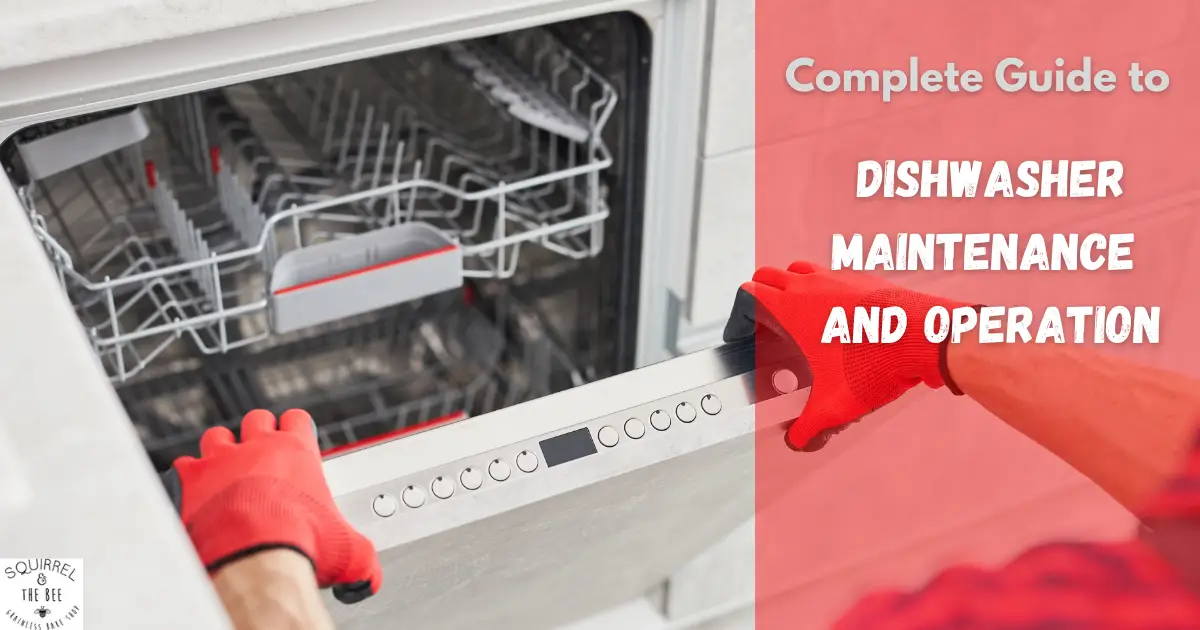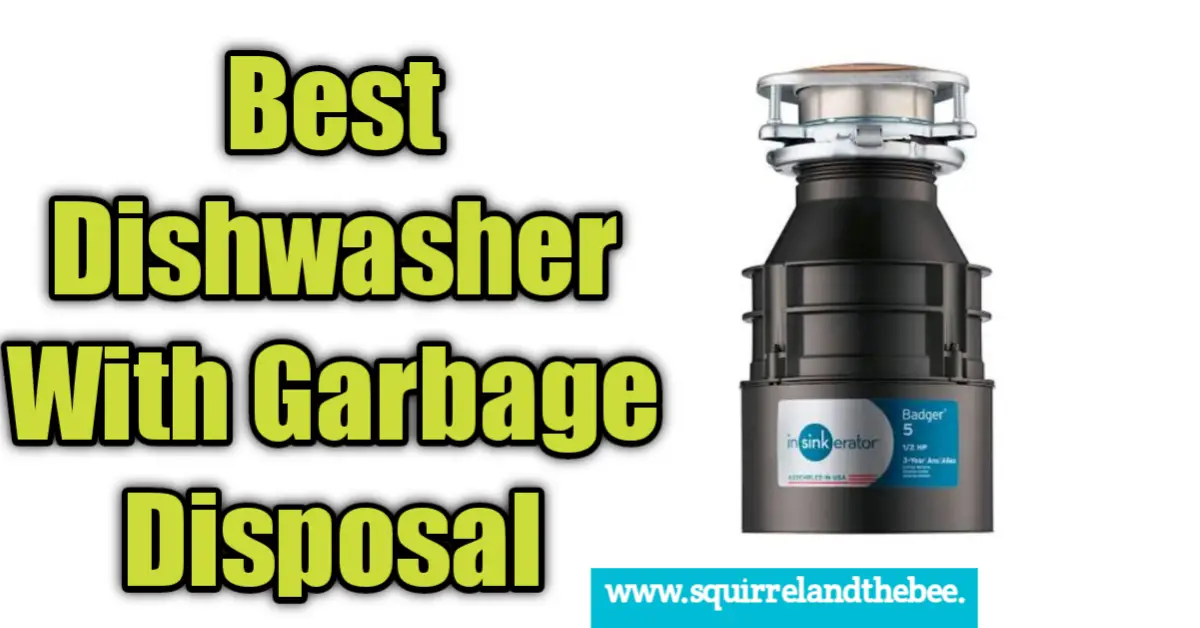The modern dishwasher has revolutionized kitchen cleanup, saving countless hours of manual dishwashing and significantly reducing water consumption compared to hand washing. However, to get the most out of your appliance, proper maintenance and operation are essential. This comprehensive guide will walk you through everything you need to know about dishwasher care, from daily maintenance to troubleshooting common issues.
Understanding Your Dishwasher
Types of Dishwashers
Before diving into maintenance, it’s important to understand the different types of dishwashers available:
- Built-in dishwashers: The most common type, permanently installed under your kitchen counter
- Portable dishwashers: Freestanding units that can be moved and connected to your sink when needed
- Drawer dishwashers: Single or double-drawer units that can be operated independently
- Countertop dishwashers: Compact units ideal for small kitchens or occasional use










Last update on 2024-12-06 / Affiliate links / Images from Amazon Product Advertising API
Key Components
Your dishwasher consists of several crucial components that work together to clean your dishes:
- Spray Arms: These rotating arms distribute water throughout the dishwasher. They’re essential for proper water circulation and cleaning performance.
- Filters and Screens: These components catch food particles and debris, preventing them from recirculating onto clean dishes or clogging the drain.
- Water Inlet Valve: Controls water flow into the dishwasher. Proper water pressure is crucial for optimal performance.
- Drain Pump: Removes dirty water and food particles from the dishwasher.
- Heating Element: Heats water for better cleaning and dries dishes after washing.
- Control Panel: Interface for selecting cycles and monitoring operations.
- Garbage Disposal Connection: Some models include built-in disposal units for managing food waste.
Understanding Water Requirements
Water quality and pressure significantly impact your dishwasher’s performance:
- Water Pressure: Most dishwashers require 20-120 PSI for optimal operation. Low water pressure can result in poor cleaning performance and longer cycle times.
- Water Temperature: The ideal incoming water temperature is 120°F (49°C) for optimal cleaning and grease removal.
- Water Hardness: Hard water can leave mineral deposits on dishes and inside the dishwasher. Consider using water-softening products if you live in a hard water area.
Proper Loading Techniques
Upper Rack Best Practices
The upper rack is designed for:
- Glasses and cups (placed at an angle to prevent water pooling)
- Light plastic items (away from the heating element)
- Small bowls
- Baby bottles (secured in specialized holders)
Pro Tip: Avoid overcrowding to ensure proper water circulation and cleaning.
Lower Rack Organization
Optimize your lower rack loading:
- Place plates and large items around the perimeter
- Position pots, pans, and casserole dishes at an angle
- Load serving dishes on the sides
- Use specialized baskets for specific items like baby bottles or delicate items
Silverware Basket Tips
For optimal cleaning and safety:
- Alternate utensils up and down to prevent nesting
- Place sharp items pointing downward
- Mix different types of utensils in each compartment
if you have Miele dishwasher you can find more cleaning tips in this post
Detergents and Additives
Types of Detergents
Choose from several detergent options:
- Powder: Economical and effective, especially in areas with hard water
- Gel: Good for quick cycles and dissolves easily
- Pods/tablets: Convenient pre-measured doses with multiple cleaning agents
- Eco-friendly options: Plant-based formulas for environmentally conscious consumers










Last update on 2024-12-06 / Affiliate links / Images from Amazon Product Advertising API
Brand-Specific Recommendations
Different dishwasher brands may perform better with specific detergents:
- Whirlpool: Works best with low-sudsing, phosphate-free detergents
- Samsung: Recommends specific tablet sizes and powder quantities
- Bosch: Performs optimally with tablets containing built-in rinse aid
- Miele: Designed for powder detergents or Miele-specific tabs
Special Situations
Consider these factors when choosing detergent:
- Septic Systems: Use septic-safe formulas without harsh chemicals
- Soft Water: Reduce detergent quantity to prevent excess suds
- Baby Items: Choose gentle, fragrance-free options for baby bottles and items
Maintenance Schedule
Daily Maintenance
Perform these tasks daily:
- Scrape plates before loading
- Check and clean filters of visible debris
- Wipe door seals with a damp cloth
- Leave the door slightly open when not in use
Weekly Maintenance
Weekly tasks include:
- Remove and clean filters thoroughly
- Check spray arms for clogs
- Wipe the control panel and exterior
- Clean around the door seal
Monthly Maintenance
Once a month:
- Run an empty cycle with a dishwasher cleaner
- Inspect water connections
- Clean door seals thoroughly
- Check and tighten any loose components
Quarterly Maintenance
Every three months:
- Descale the unit if you have hard water
- Deep clean all removable parts
- Check water hardness levels
- Inspect and clean the garbage disposal connection
Troubleshooting Common Issues
Drainage Problems
If your dishwasher isn’t draining properly:
- Check for clogs in the filter
- Ensure the drain hose isn’t kinked
- Verify the garbage disposal is clear
- Inspect the air gap if installed
Cleaning Performance Issues
Poor cleaning results may be caused by:
- Incorrect loading techniques
- Hard water deposits
- Clogged spray arms
- Insufficient water temperature
- Wrong detergent type or amount
Mechanical Issues
Common mechanical problems include:
- Leaks from damaged door seals
- Unusual noises from spray arms or pump
- Control panel malfunctions
- Door latch problems
Energy Efficiency
Water Conservation
Maximize water efficiency:
- Run full loads only
- Use eco-friendly cycles when possible
- Consider upgrading to an Energy Star model
- Avoid pre-rinsing dishes unless heavily soiled
Electricity Usage
Reduce energy consumption:
- Run during off-peak hours
- Use air-dry instead of heat-dry when possible
- Maintain proper water temperature
- Select economy settings for regular loads
Environmental Impact
Water Usage
Modern dishwashers typically use 3-5 gallons per cycle, compared to 27 gallons for hand washing. To minimize environmental impact:
- Skip pre-rinsing when possible
- Use eco-friendly detergents
- Maintain proper loading practices
- Fix leaks promptly
Energy Consumption
Reduce your carbon footprint:
- Choose Energy Star certified models
- Use energy-saving features
- Maintain proper maintenance
- Consider solar water heating
FAQ Section
Q: How often should I clean my dishwasher filter? A: Clean the filter weekly for optimal performance. Heavy usage may require more frequent cleaning.
Q: Why are my dishes coming out cloudy? A: This is often due to hard water deposits or too much detergent. Try using a rinse aid and adjusting the detergent amount.
Q: Is it better to pre-rinse dishes? A: Modern dishwashers are designed to handle food particles. Only scrape off large debris; pre-rinsing wastes water and energy.
Q: How can I prevent water spots? A: Use a rinse aid, ensure proper water temperature, and consider using a water softener if you have hard water.
Maintenance Checklist
Daily:
- Scrape dishes
- Wipe door seal
- Check filter for debris
Weekly:
- Clean filter thoroughly
- Check spray arms
- Wipe exterior
Monthly:
- Deep clean with dishwasher cleaner
- Inspect water connections
- Clean door seals
Quarterly:
- Descale if needed
- Check water hardness
- Inspect all components
Conclusion
A well-maintained dishwasher not only cleans better but also lasts longer and operates more efficiently. By following this comprehensive guide, you can ensure optimal performance, reduce repairs, and extend the life of your appliance. Remember that prevention through regular maintenance is always better than dealing with repairs or replacement.
For specific issues or model-specific guidance, always consult your owner’s manual or contact a qualified service professional. With proper care and attention, your dishwasher can provide years of reliable service while helping you save time, water, and energy in your kitchen cleanup routine.




